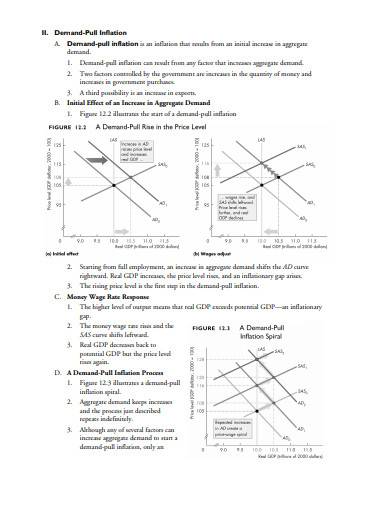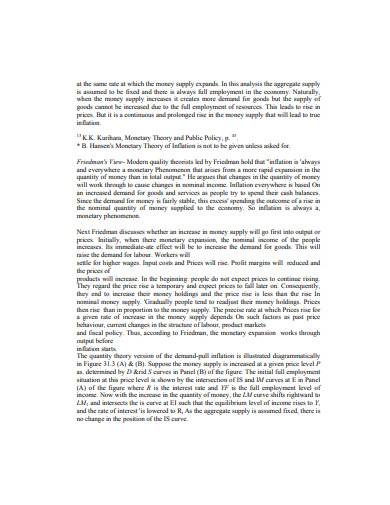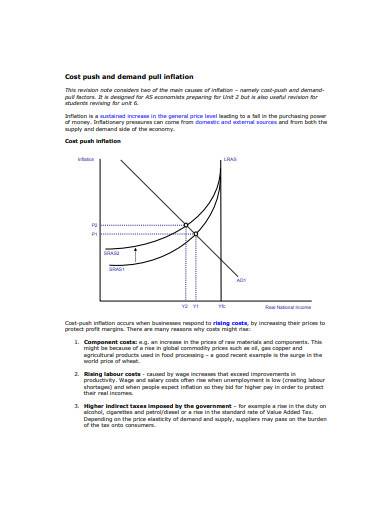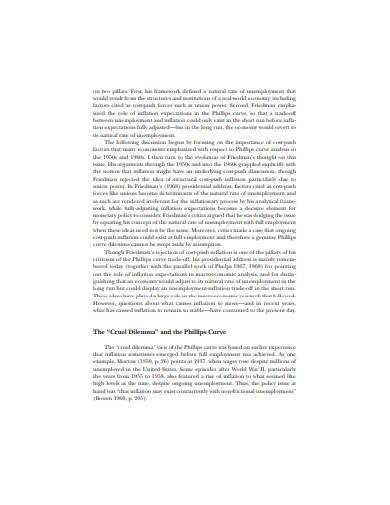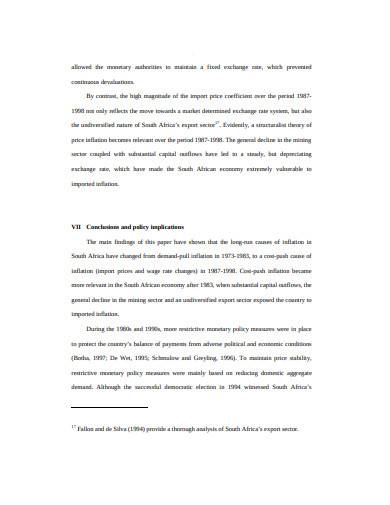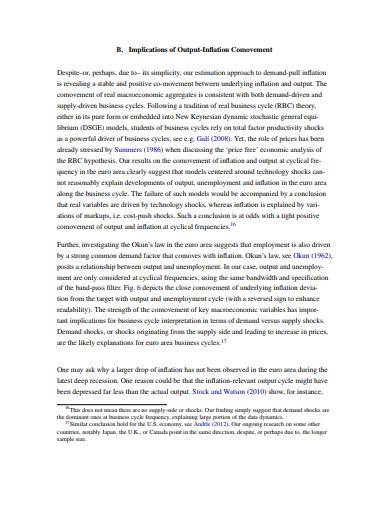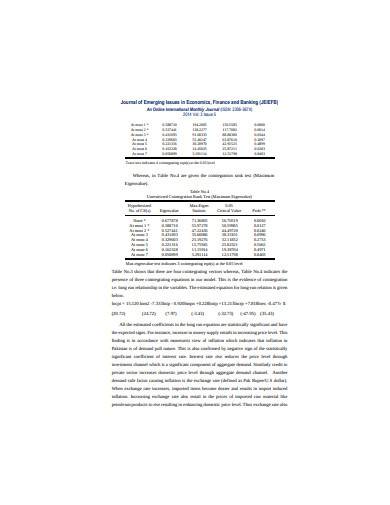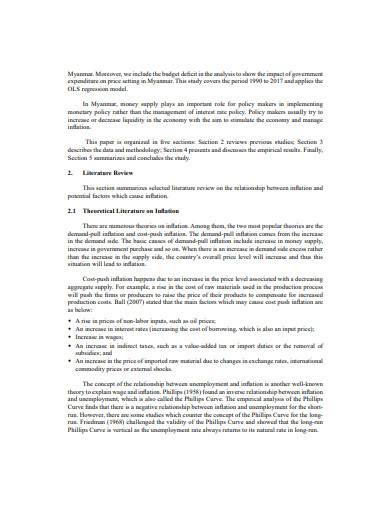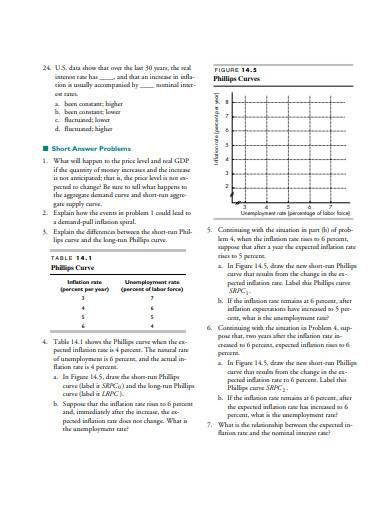Economic growth is essential in improving the overall quality of living in a country. However, unaccounted economic growth may inflict more harm than good in the long run. We refer to this situation as demand-pull inflation, which we are going to discuss in this article. We have also included examples that contain graphs and diagrams showing demand-pull inflations. These sample documents we compiled will allow you to practice interpreting annual reports of inflation status for the benefit of your business.
What Is Demand-Pull Inflation?
Demand-pull inflation is a type of inflation that stems from an exceeding aggregate demand versus supply level. This may be a result of higher employment levels in a particular country or state. When the demand exceeds the production of goods and services due to several factors, there will be an inflationary gap. Meaning, the economy is growing at a faster pace than normal.
On the other hand, cost-push inflation occurs when the production cost of the products, such as the labor cost and raw materials expenses go up. Nevertheless, both demand-pull inflation and cost-push inflation results in the purchasing ability of a currency unit reduction. This means that you need to spend more money to buy the necessary commodities or avail essential services.
What Are the Causes of Demand-Pull Inflation?
We have mentioned earlier that demand-pull inflation is a result of the excess in demand over the supply level. In this section, we will discuss what makes the demand level exceed the supply level of the products.
1. Lower Interest Rates
Setting lower interest rates to the products will attract customers to spend money, causing the supply level to decrease. As a result, there will be a demand-pull inflation in the long run.
2. Rising Housing Prices
Another situation that may boost the purchasing power of the customers is the rising prices of the houses. We refer to this situation as a wealth effect, which may happen to people who hold houses as their assets. Subsequently, the demand level will rise, surpassing the supply level. And it won’t be long before the inflation rate follows.
3. Increasing Wages
At some point, the workers may demand higher wages. With higher salaries, they will have more money to spend. This arrangement will spur the rise of demand from the consumers, and eventually, demand-pull inflation will occur.
10+ Demand-Pull Inflation Samples in PDF | DOC
Learning to analyze demand-pull inflation is essential, especially when you are running a business. Download the following documents to improve your ability to interpret this type of information.
1. Demand-Pull Inflation Sample
2. Demand-Pull Inflation Template
3. Cost Push and Demand Pull Inflation
4. Cost-Push and Demand-Pull Inflation Sample
5. Demand Pull Inflation in PDF
6. Sample Demand Pull Inflation Template
7. Demand Pull Inflation Example
8. Basic Demand-Pull Inflation Sample
9. Formal Demand Pull Inflation Template
10. General Demand Pull Inflation Sample
11. Demand Pull Inflation in DOC
How to Prepare Your Business to Deal with Inflation
Did you know that in 2008, the global inflation had a 6.2 percent increase compared to its previous year? That’s the highest recorded inflation rate in the past decade, which caused a global financial crisis. Economists cannot accurately and consistently predict inflation, but you can prepare for it before it happens with the following best practices.
1. Increase Your Products’ Prices
It may not be your first option in dealing with inflation, but it will be beneficial if you will include it in your mitigation plan to expand the number of your choices. Remember to keep track of your competitor’s prices when you implement it. You don’t want to lose a competitive edge by setting very high prices for your products.
2. Keep the Cash Flowing
You don’t want to experience financial pressures during these times. Thus, you have to find ways to smoothen the payment process of your business. Start by conducting a cashflow analysis to keep track of the money that your company generates and the expenses incurred. By doing it, you can determine any clog in the flow. Therefore, you can promptly create an action plan for it.
3. Reduce the Expenses
Reducing the expenses will guarantee you that your company can still generate profits despite the inflation. If your expenditures are low, you can always flexibly set the feasible prices for your products. Start by considering the following options.
Automate Tasks
- By automating the relevant tasks of your business, you can decrease the required workforce for a successful business operation. Be careful with this process, though. Make sure that you assign someone to check the data reports to ensure its accuracy and relevance.
Lower Your Production Costs
- If you intend to lower your expenses, production costs are one of the significant areas you need to check. Determine if the raw materials are quite expensive or if there is a cheaper alternative option in buying these materials.
3. Optimize Your Firm’s Productivity
Employ a method that can effectively maximize the productivity of your employees. Although it may result in additional costs, many companies invest in hiring consultants, believing that they can benefit from it in the long run. You can also obtain a performance development plan to make your task more effective.
FAQs
What are the three types of inflation that can affect the economy?
The three major types of inflation that can create a significant effect on the economy are demand-pull inflation, cost-push inflation, and built-in inflation.
How does the government deal with demand-pull inflation?
Since demand-pull inflation affects the national economy, the government and the central banks interfere with this economic event by establishing monetary and fiscal policy.
What is the normal inflation rate?
Although no country intends to experience inflation, it does not mean that any nation wants deflation. Every country aims to maintain the inflation rate to sustain a positive economic status. According to the U.S. Federal Reserve, the ideal annual inflation rate is 2%.
To maintain the stability of a country’s economy, it is the government’s responsibility to manage its affecting factors. However, as a businessperson, it is your job to protect your business from this economic flaw. In this article, we have addressed one of the crucial factors of the economy, which is demand-pull inflation and the things that you can do to protect your business from this unwanted economic event.
Related Posts
Travel Company Profile
Exemption Letter
News Report
Employee Uniform Form
Self-Declaration Form
To Whom It May Concern Letter
10 FREE Notice To Quit Letter Samples & Templates
Security Company Profile
Written Warning
Event Program
OMR Sheet
Building Inspection Report
Employment Certificate
Teacher Lesson Plan
Deed of Assignment

